On September 15, 1896, a staggering event unfolded in the U.S. state of Texas, capturing the imagination of thousands, and turning a publicity stunt into a tragic moment in history. This was the Crash at Crush, orchestrated by William George Crush and the Missouri–Kansas–Texas Railroad, designed to be a grand spectacle of destruction that would live on in infamy due to its unforeseen deadly outcome.
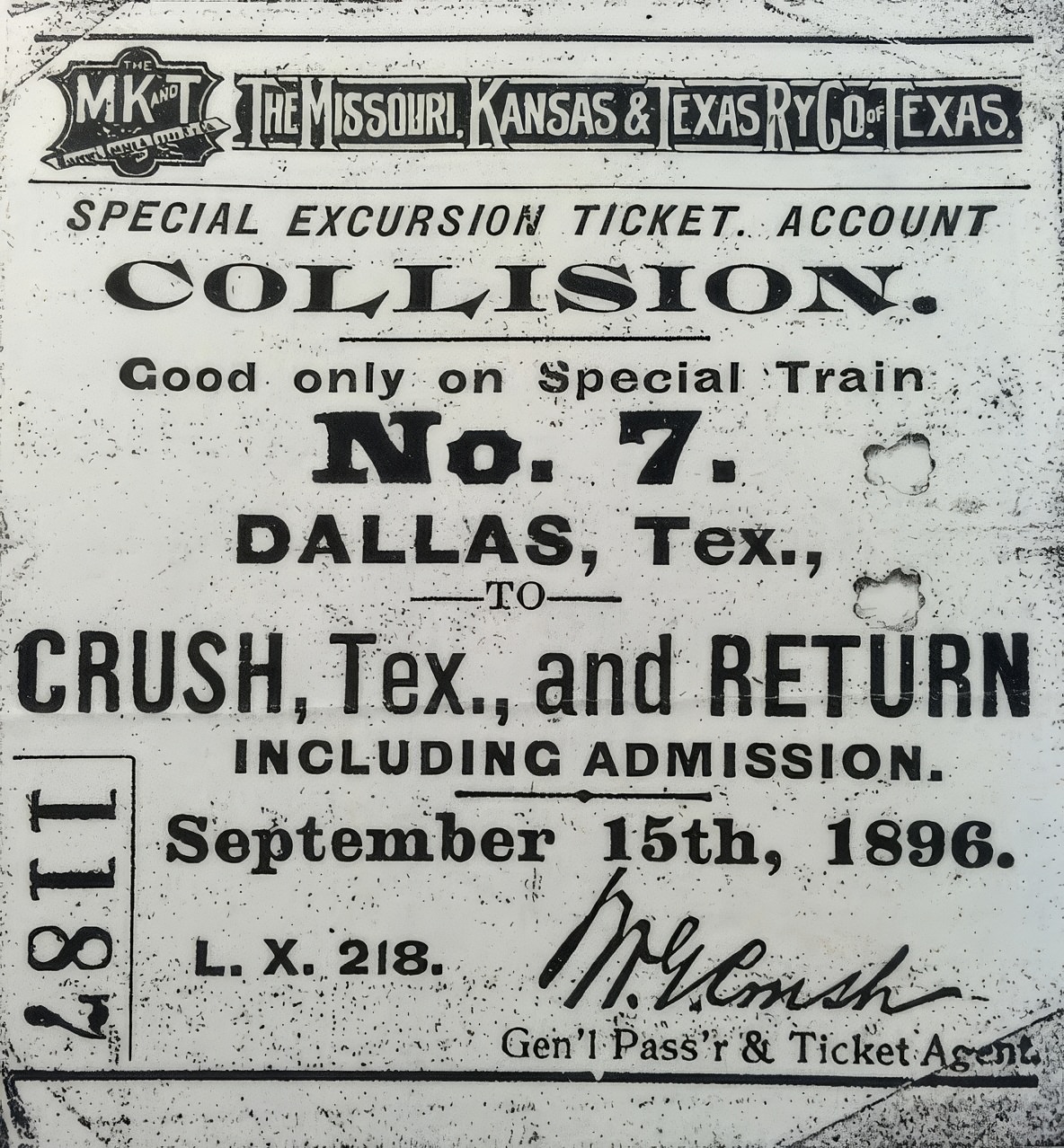
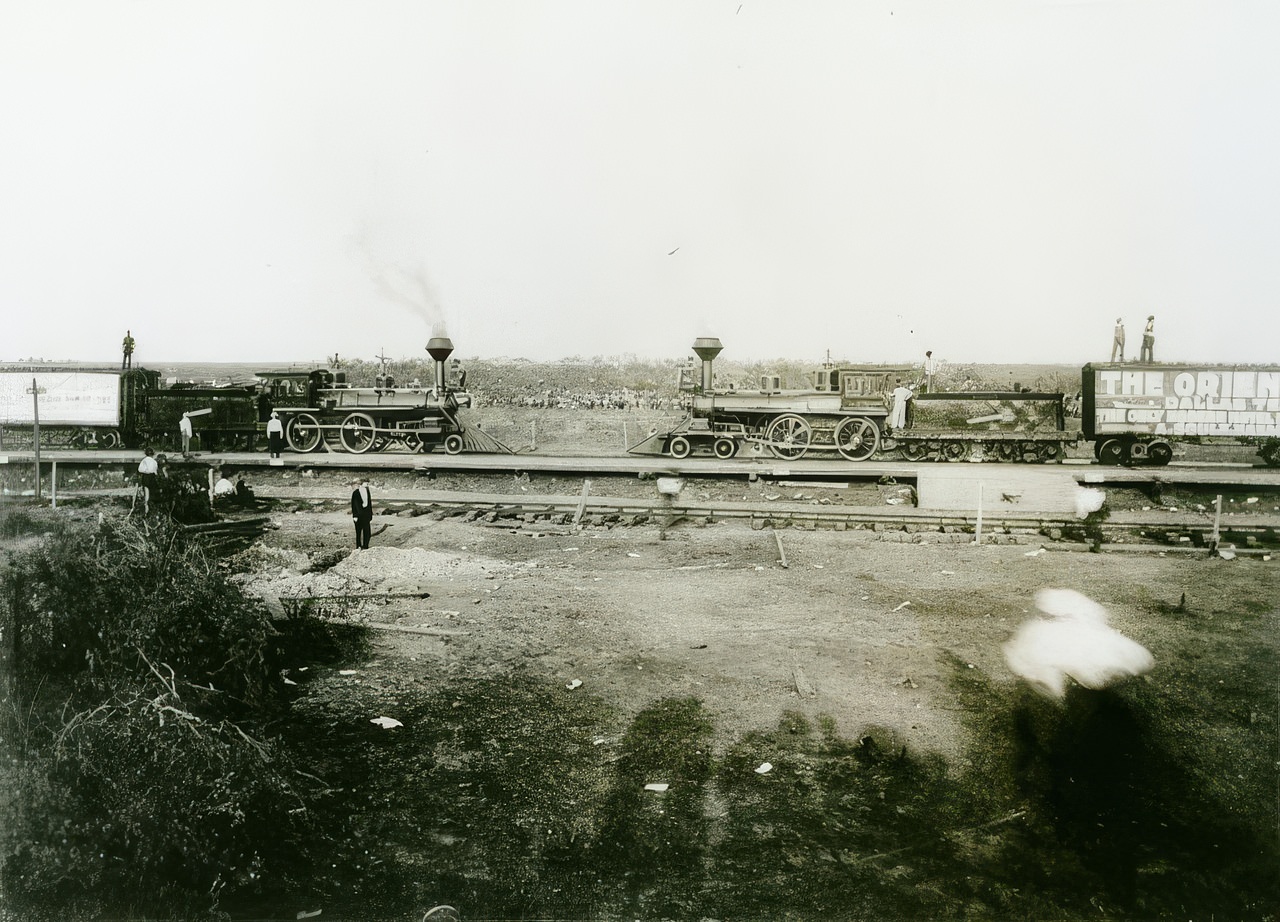
The idea was conceived by William George Crush, a general passenger agent looking to boost passenger numbers and capitalize on the public’s fascination with train wrecks, which were not uncommon in the late 19th century. Crush proposed a controlled crash of two locomotives as a publicity stunt, promising a spectacle unlike any other. The Missouri–Kansas–Texas Railroad, seeing the potential for drawing attention and visitors, approved the event, setting the stage for one of the most audacious publicity stunts of the time.
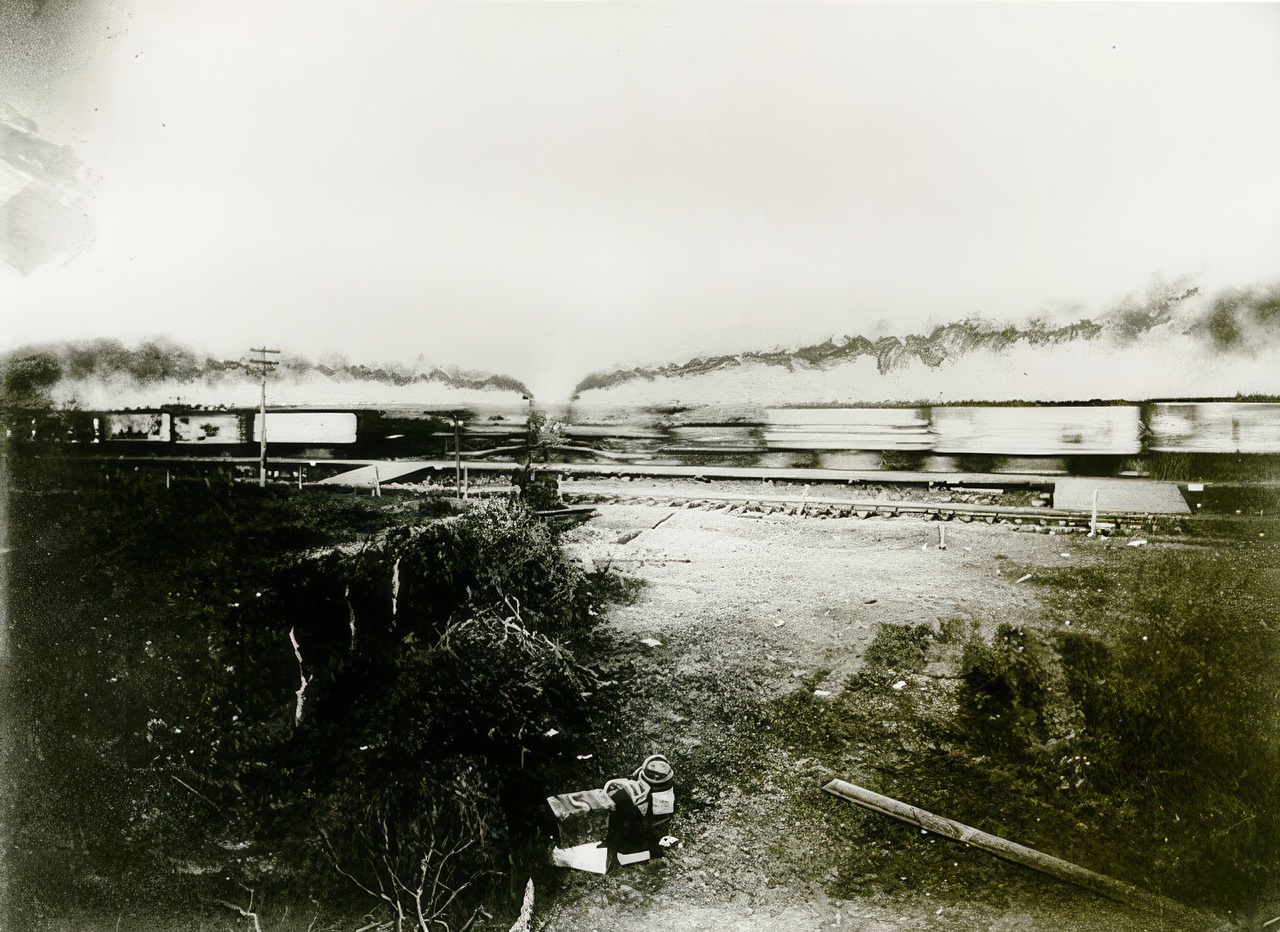
A temporary town, aptly named Crush, was constructed to accommodate the event, complete with a grandstand, press area, and a special track laid for the sole purpose of the collision. Situated midway between Dallas and Waco, the location was chosen for its accessibility, and the company offered special train fares to attendees, drawing an estimated crowd of 40,000 spectators. The setup was meticulous, with every detail planned to ensure that the spectacle would be both grand and safe for the onlookers.
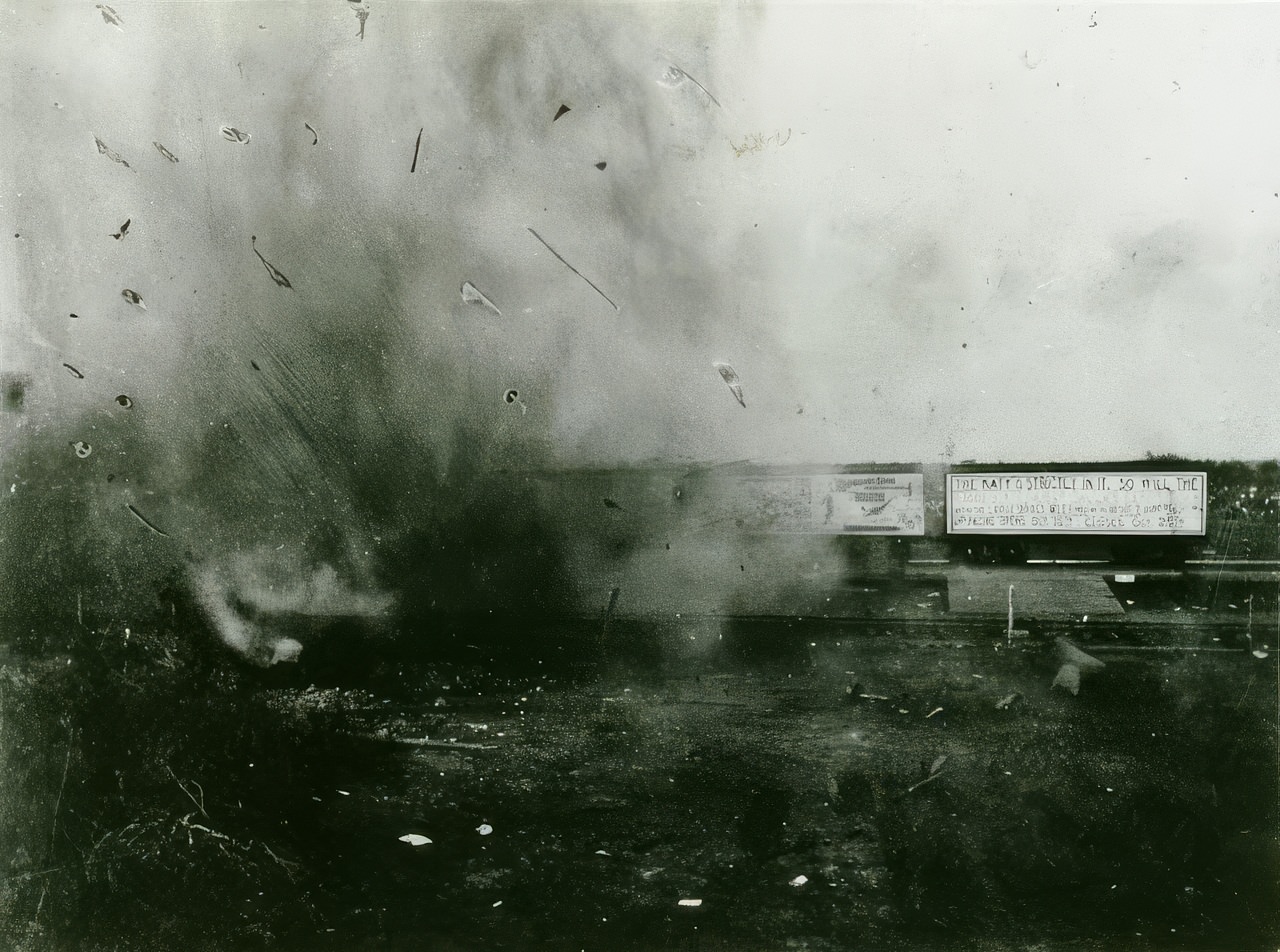
For the event, two decommissioned locomotives were chosen: one painted bright green and the other bright red, symbolizing the Missouri–Kansas–Texas Railroad’s colors. These steam giants were set on a collision course, with a four-mile stretch of track ensuring they would gain enough speed for a spectacular crash. The engines, stripped of any valuable equipment but still formidable in their size and power, were accompanied by boxcars emblazoned with advertisements, adding to the visual spectacle and commercial appeal of the event.
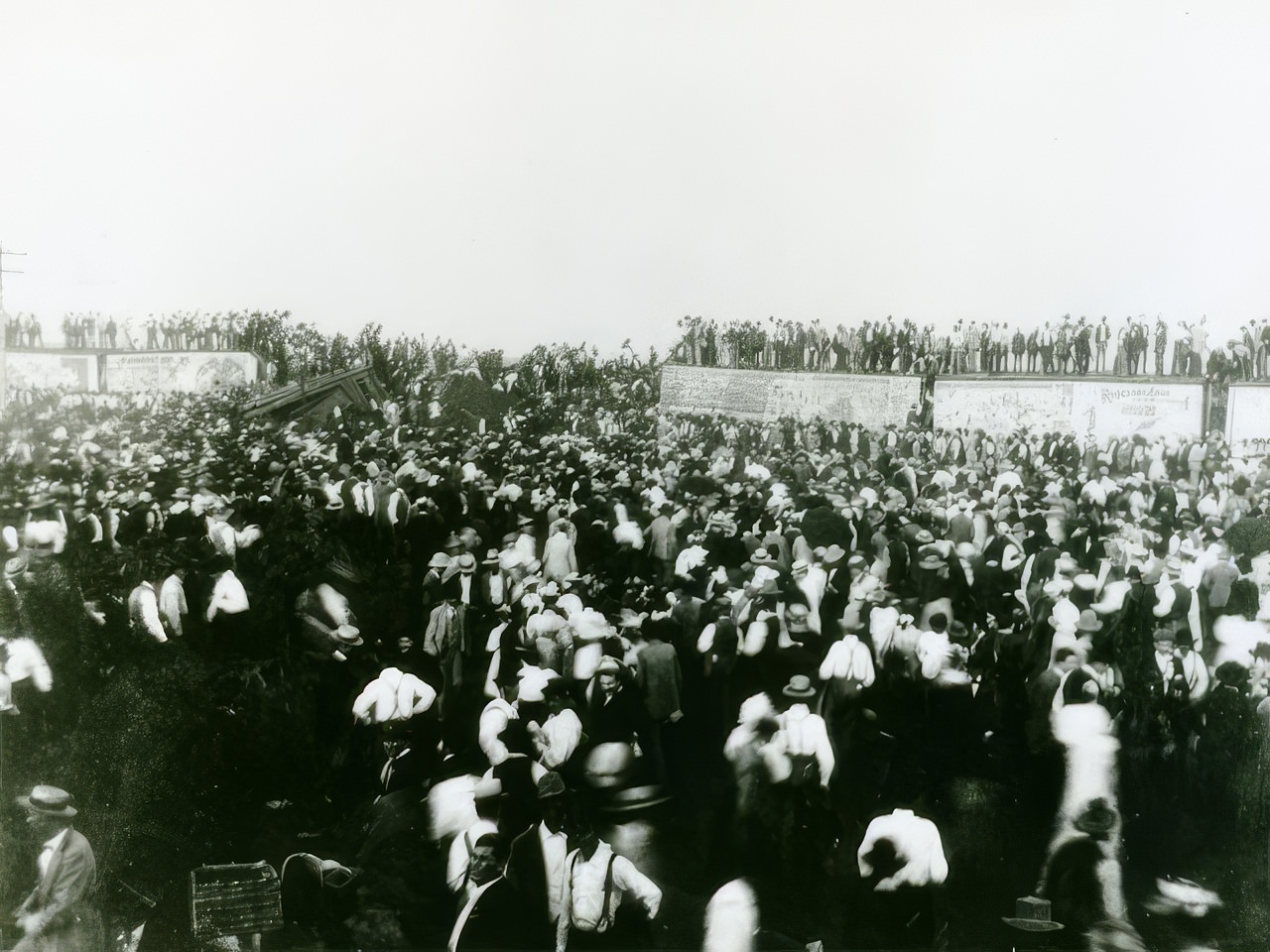
As the anticipation reached its peak, the locomotives were set in motion, steaming towards each other with increasing speed. Spectators, who had been assured of their safety by the event’s planners, watched in awe as the two iron behemoths collided with a thunderous impact. What was not anticipated, however, was the catastrophic explosion that followed.
The boilers of both locomotives, unable to withstand the force of the collision, exploded violently, sending a deadly shower of metal debris flying into the crowd. The spectacle turned to horror as the reality of the danger became apparent. Two spectators lost their lives that day, and numerous others were injured by the flying shrapnel, turning what was intended to be a controlled demonstration of destruction into a tragic disaster.
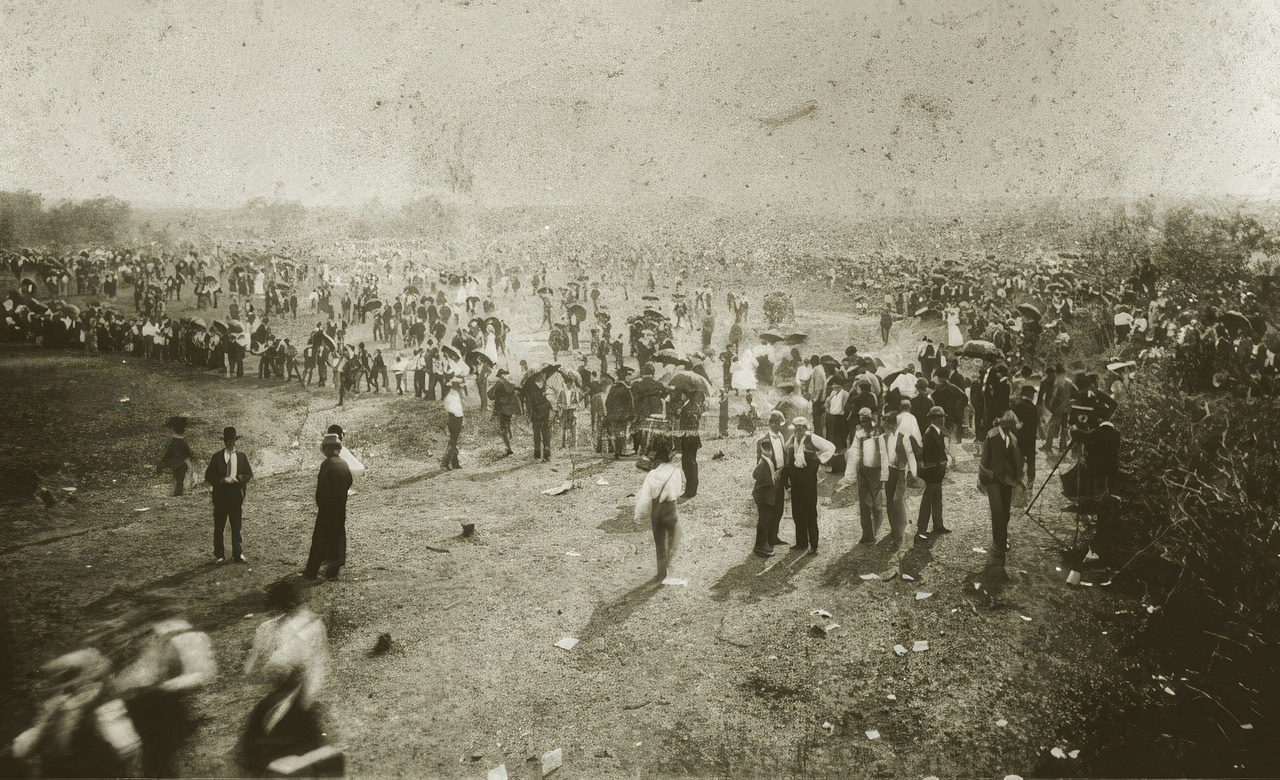
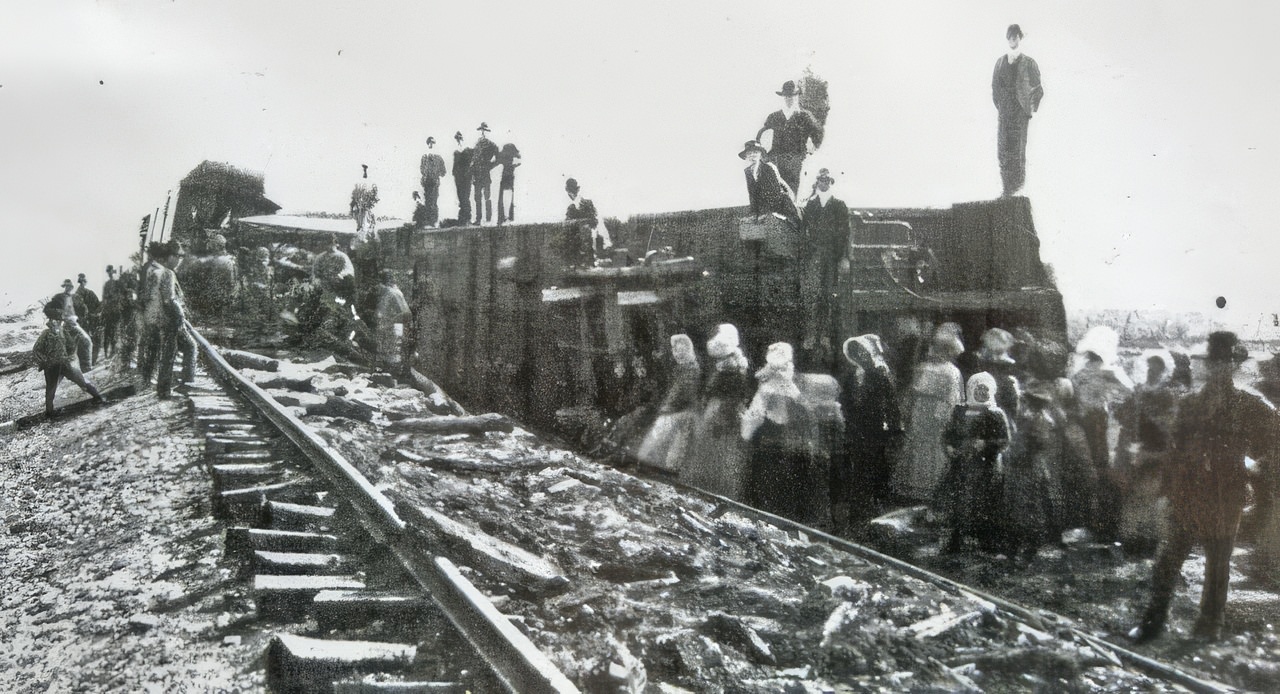
The immediate aftermath of the explosion was chaos, with medical personnel attending to the injured amidst the stunned silence that followed the blast. The explosion not only resulted in loss of life and injuries but also raised questions about the ethics and safety of staging such a dangerous spectacle purely for entertainment and publicity.
The Crash at Crush was born out of a desire to captivate and draw crowds, leveraging the human fascination with destruction and the spectacle of disaster. It was a bold marketing ploy by the Missouri–Kansas–Texas Railroad to demonstrate the power and potential of rail travel, albeit in a manner that spectacularly backfired. The event was organized to showcase the era’s engineering marvels and the railroad’s prowess, but it instead became a cautionary tale about the perils of underestimating the forces at play in such a grandiose display.


